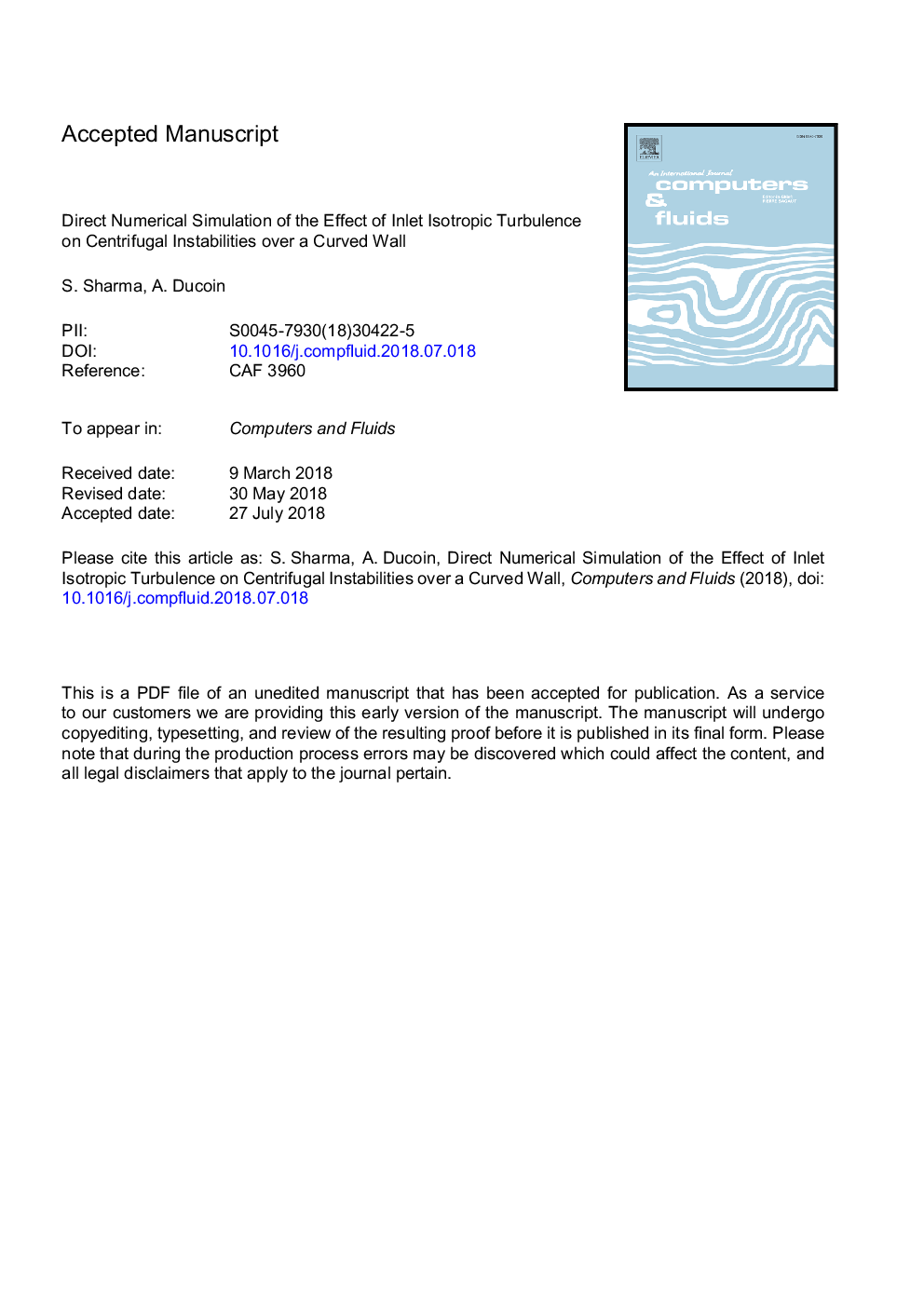| Article ID | Journal | Published Year | Pages | File Type |
|---|---|---|---|---|
| 7155749 | Computers & Fluids | 2018 | 46 Pages |
Abstract
The Direct Numerical Simulations (DNS) are carried out in order to capture the flow instabilities and transition to turbulent flow over a curved wall. The simulations are performed using the open source code NEK5000, which solves the incompressible Navier-Stokes equations using high order, spectral element method. The primary objective is to investigate the effect inlet isotropic turbulence, and the development of centrifugal instabilities induced during laminar to turbulent transition. Free-stream turbulence intensities of 0.1% and 1% amplitude have been investigated. The obtained results are compared with existing numerical and experimental reference studies. The investigation of the flow supports the fact that the Görtler vortices show up, which trigger the transition to turbulence. This mechanism appears to be very sensitive to the inlet conditions. It is observed that it occurs earlier as the turbulence intensity increases, with a sharper transition, characterized by a more random longitudinal streaks distribution in the span-wise direction due to the non uniform, atmospheric turbulence prescribed at the inlet. The decreased turbulence intensity leads to more uniform distribution of the streaks and a longer transitional region along the plate. The characteristic frequency of secondary instability is found to be less receptive to the inflow conditions.
Related Topics
Physical Sciences and Engineering
Engineering
Computational Mechanics
Authors
S. Sharma, A. Ducoin,
